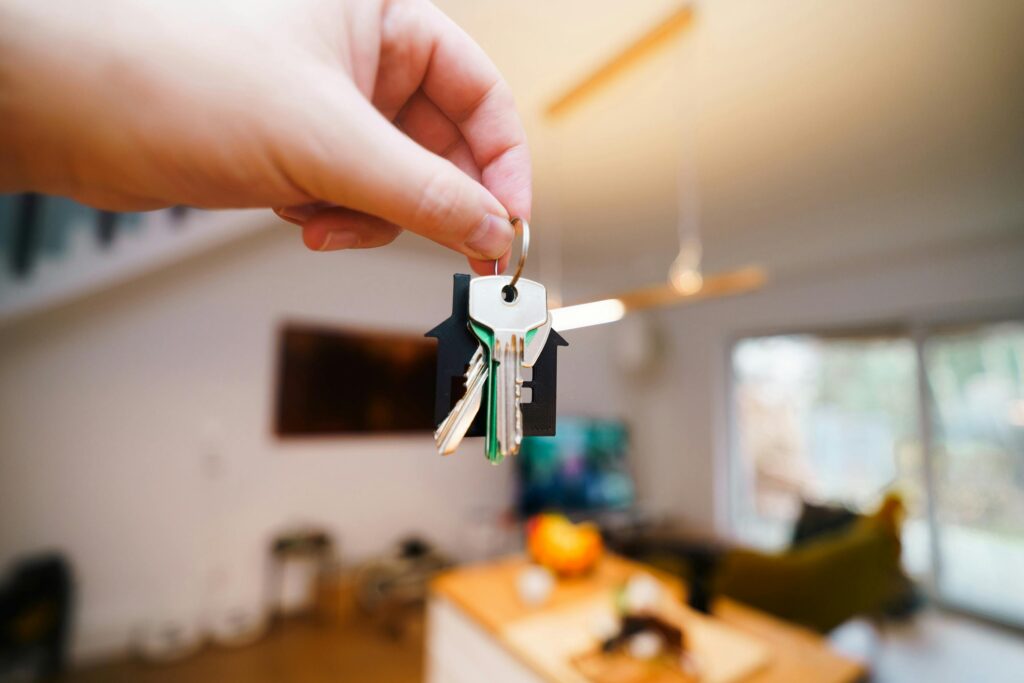Thinking of becoming a landlord? Welcome to our guide, buy-to-let explained. Many people consider property a reliable investment. Whether you plan to buy a single rental home or build a portfolio, understanding buy-to-let is essential.
A rental property can provide a steady income if the rent covers mortgage payments. On average, UK buy-to-let properties generate around £1,100 per month in rent. Property prices may also rise over time, offering long-term financial benefits. However, risks exist, and landlords have legal responsibilities to fulfil.
This guide covers key aspects of buy-to-let, including mortgages, tax implications, and landlord responsibilities.

What Does Buy-to-Let Mean?
Buy-to-let involves purchasing a property with the intention of renting it out. The goal is to generate income through rent while benefiting from potential property value increases. Landlords must also handle property maintenance and tenant management.
A buy-to-let mortgage differs from a standard residential mortgage. Instead of basing affordability on personal income, lenders assess potential rental earnings. Most lenders require a 25% deposit, though some accept lower amounts at higher interest rates. Many buy-to-let mortgages operate on an interest-only basis, meaning borrowers repay only the interest each month and clear the total loan at the term’s end.
For those without sufficient savings, securing a buy-to-let mortgage is crucial. Lenders typically require applicants to be homeowners earning at least £25,000 annually with a good credit history. Some impose age restrictions, usually capping eligibility at 70 years old.
More details on securing a buy-to-let mortgage are available in our Mortgage Guides.

How Much Can You Borrow for a Buy-to-Let Mortgage?
Unlike standard mortgages, buy-to-let lending criteria focus on rental income. Lenders usually expect rental income to be at least 125%-145% of monthly mortgage payments. For example, if a mortgage costs £800 per month, rental income should be at least £1,000.
Lenders conduct stress tests to ensure borrowers can meet repayments, even if interest rates rise. Mortgage affordability calculators can help estimate borrowing limits based on expected rental earnings.
Buy-to-Let Deposit and Fees
Most lenders require a minimum 25% deposit for a buy-to-let mortgage. However, securing the best interest rates often necessitates a deposit of 40% or more. Some lenders offer options with lower deposits, but these often come with higher fees and interest rates.
Landlords must also budget for upfront costs, including:
Mortgage arrangement fees – Can range from £1,000 to £3,000.
Stamp Duty – A 3% surcharge applies to second homes valued over £40,000.
Solicitor fees – Typically between £800 and £1,500.
Property surveys – Can cost £250-£1,500, depending on the survey type.
Rental Yield and Profitability
Understanding rental yield is essential when assessing a buy-to-let investment. Rental yield is calculated as:
(Annual Rental Income / Property Value) x 100
For example, a property worth £200,000 with an annual rental income of £14,000 has a 7% yield. A good rental yield in the UK typically ranges between 5% and 7%. Some high-demand areas may offer even higher yields.
Landlords must also factor in maintenance costs, property management fees, and potential void periods when tenants vacate. Setting aside at least £300 annually for repairs is advisable.
Tax Implications for Landlords
Income Tax
Rental income is subject to income tax at standard rates:
Basic rate taxpayers (20%): Profits up to £50,270.
Higher rate taxpayers (40%): Profits between £50,271 and £150,000.
Additional rate taxpayers (45%): Profits over £150,000.
Landlords can deduct some expenses before calculating tax, such as:
Letting agent fees
Property repairs
Landlord insurance
Utility bills (if covered by the landlord)


Capital Gains Tax (CGT)
When selling a buy-to-let property, landlords pay Capital Gains Tax on the profit. Rates are:
18% for basic rate taxpayers
28% for higher rate taxpayers
Some allowances apply, and expenses like Stamp Duty and solicitor fees may be deductible.
More details on tax liabilities can be found on GOV.UK.
Landlord Responsibilities
Becoming a landlord comes with legal duties, including:
Providing a tenancy agreement – Most landlords use an Assured Shorthold Tenancy (AST).
Protecting tenant deposits – Deposits must be held in a government-backed scheme such as MyDeposits or the Tenancy Deposit Scheme.
Ensuring tenant rights to rent – Landlords must check tenant immigration status under the Right to Rent scheme.
EPC Requirements – Properties must meet a minimum EPC rating of E. Failure to comply can result in fines.
Gas and electrical safety – Annual gas safety checks and five-year electrical inspections are required.
Fire safety compliance – Smoke alarms must be fitted on each floor, and carbon monoxide detectors installed in rooms with solid fuel appliances.
More details on landlord responsibilities can be found in our Tenant Rights Guide.
Should You Use a Letting Agent?
Letting agents can handle tenant management, reducing landlord workload. Services include:
Tenant sourcing – Advertising, viewings, and reference checks.
Rent collection – Ensuring timely payments and handling arrears.
Property management – Coordinating repairs and ensuring legal compliance.
Fees for let-only services range from 8% to 12% of rental income, while full property management can cost up to 20%.
Finding the Right Buy-to-Let Property
Location plays a crucial role in the success of rental properties. Key considerations include:
Proximity to schools – Ideal for family rentals.
Transport links – Essential for commuters.
Local amenities – Shops and entertainment attract tenants.
Rental demand – University towns and city centres often provide higher occupancy rates.
New-build properties can reduce maintenance costs and often attract tenants due to better energy efficiency.
Is Buy-to-Let a Good Investment
Buy-to-let remains a viable investment, especially with rising rental demand. However, landlords must stay informed about market conditions, tax regulations, and rental legislation. Conducting thorough research and seeking financial advice can help ensure long-term success.
For more detailed guidance on mortgages and property investments, explore our Mortgage Guides.
Thinking of becoming a landlord? Welcome to our guide, buy-to-let explained. Many people consider property a reliable investment. Whether you plan to buy a single rental home or build a portfolio, understanding buy-to-let is essential.
A rental property can provide a steady income if the rent covers mortgage payments. On average, UK buy-to-let properties generate around £1,100 per month in rent. Property prices may also rise over time, offering long-term financial benefits. However, risks exist, and landlords have legal responsibilities to fulfil.
This guide covers key aspects of buy-to-let, including mortgages, tax implications, and landlord responsibilities.
People Also Browse These Titles
FAQ: Buy-to-Let Explained
| Question | Answer |
|---|---|
| What is a buy-to-let mortgage? | A buy-to-let mortgage is designed for people who want to purchase a property to rent out rather than live in. Lenders base approval on potential rental income as well as your financial circumstances. |
| Who can apply for a buy-to-let mortgage? | Most applicants are homeowners or experienced landlords, but first-time buyers can also qualify if they meet lender requirements. Income stability and deposit size are key factors. |
| How much deposit do I need for a buy-to-let mortgage? | Typically, you’ll need at least a 25 percent deposit, though some lenders may accept slightly less depending on property type and your credit history. Larger deposits can unlock better rates. |
| Can I live in a buy-to-let property? | No. Buy-to-let mortgages are strictly for rental purposes. Living in the property would breach the mortgage terms and could lead to penalties. |
| How is a buy-to-let mortgage different from a residential mortgage? | A residential mortgage is based on your personal income, while buy-to-let lending is assessed on the property’s expected rental yield. Interest rates and fees also tend to be higher. |
| Are buy-to-let mortgages interest-only? | Many are, meaning you pay interest each month and repay the loan balance at the end of the term, often by selling or refinancing the property. Repayment options are also available. |
| What taxes apply to buy-to-let properties? | Landlords pay Stamp Duty on purchases, Income Tax on rental income, and Capital Gains Tax when selling. You can usually deduct allowable expenses to reduce your tax bill. |
| Can I get a buy-to-let mortgage through a limited company? | Yes. Limited company buy-to-let has become popular due to tax advantages for higher-rate taxpayers. Specialist lenders offer products tailored for company structures. |
| Do I need a letting agent to manage my property? | It’s optional. You can manage the property yourself or hire an agent to handle tenant checks, maintenance, and rent collection for a management fee. |
| How can Connect Experts help with buy-to-let mortgages? | Connect Experts can match you with FCA-authorised mortgage advisers who specialise in buy-to-let lending, helping you compare lenders and find the most suitable deal for your goals. |
